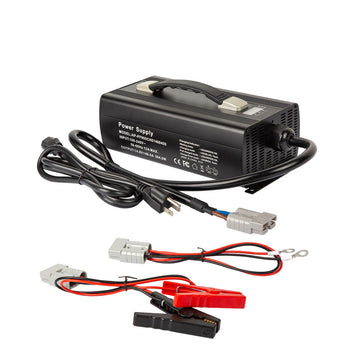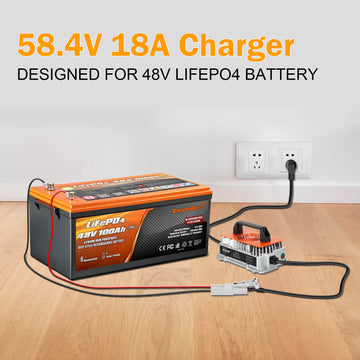How Much Power Does a Solar Panel Produce?
How Much Power Does a Solar Panel Produce?

On average, solar panels designed for domestic use produce around 250-400 watts, enough to power a household appliance like a refrigerator for an hour.
To work out how much electricity a solar panel can produce in a day, you will need to multiply the watts by the hours of sunshine.
The higher the wattage of each panel, the more electricity is created. By combining individual solar panels into a solar system, you can easily generate enough power to run your entire home appliances.
In 2020, the average U.S.home used 10,715 kilowatt-hours (kWh), or 893 kWh per month (It depends on the size of appliances and how many devices are in the different families). If you want a solar system to power your entire home year-round, you will need to install a system that can provide all of these energy requirements.
The actual output of each individual solar panel will also depend on a range of factors including the location, local weather conditions, and the angle and direction that solar panels have been installed.

How Solar Panels Generate Energy?
Solar panels work when particles of light, or photons, remove electrons from their orbits. When the electrons are removed, electricity begins to be generated and is captured and stored. This happens when the sunlight reaches the part of the panel called a photovoltaic cell.
Each solar panel has hundreds to thousands of these cells (This depends on the size of the panel). Multiple solar panels make up a solar panel system known as a solar array. Each array is connected to the existing electrical grid to allow the produced solar energy to be directed appropriately.
What Are Watts and Kilowatts?
To understand how much electricity a solar panel can generate, we first need to get comfortable with some units of electricity and energy.
If you have been reading about solar panels, you will have noticed some specific units being mentioned: watt (W) and kilowatt (kW), plus watt-hours (Wh) and kilowatt-hours (kWh). Watts and kilowatts are units of power, and indicate how much power a solar panel can provide; 1,000 watts (W) = 1 kilowatt (kW).
Watt-hour and kilowatt-hour are units of energy, and are used to express how much work (by work we mean running a light or an air conditioning unit) can be completed in one hour; 1,000 watt-hours (Wh) = 1 kilowatt-hour (kWh).

What Is Solar Panel Output?
Solar panels are rated by the amount of DC power generated under ideal conditions. It is expressed in watts (W) and represents how much power you can expect the panels to produce.
Most residential solar panels can produce between 250 to 400 watts (It depends on the size of the solar panels), with higher power ratings being preferred over lower power ratings. Higher-wattage solar panels create more electricity under the same conditions as lower-wattage panels.
Solar Panel Technology
To understand solar panels output further, you need to know what type of solar panels you use. There are two primary types of solar panels that are monocrystalline and polycrystalline.
Monocrystalline panels have more efficient energy production. However, they have higher upfront costs. Also, monocrystalline panels have better solar output in warmer temperatures or shaded areas. Polycrystalline panels are less efficient than monocrystalline panels, polycrystalline panels are also less expensive. Polycrystalline panels also work less efficiently in higher temperatures. Using the right type of solar panels in your home will help you maximize efficiency. You will fully harness the sun's power with an efficient, high-quality solar panel.

How Is Solar Panel Output Calculated?
The maximum or peak amount of electricity that can be produced by a solar panel is determined by its wattage. Remember this is measured under Standard Test Conditions (STC) of 77 degrees Fahrenheit, one kilowatt of solar radiation per square meter, and no wind. You will rarely find these conditions in nature, so expect your solar panel’s output to be a little less than this peak rating provided by the manufacturer.
Once you know the wattage of the solar panel, you can use the following formula to calculate how much electricity your solar panels can produce in one day: Daily watt-hours= average hours of sunlight X solar panels watts
This calculation relies on you knowing (or being able to estimate) the number of sunlight hours your solar panels receive. You can calculate this or use a solar calculator like the National Renewable Energy Lab’s solar resource maps.
Furthermore, before calculating the kilowatt-hours of a solar panel, it is helpful to know how to calculate the power rating (kW). The power rating is the amount of power produced by any single solar panel. If you have multiple solar panels, you can determine the total power rating by adding the power ratings of all solar panels.

The formula to calculate the rated power using the solar calculator is E = A r H PR, where; E is the total energy in kW, A refers to the total surface area of all solar panels, r refers to the efficiency rating, and H is the global radiation valve which is the average quantity of sun-based radiation that is received in a specific area, and PR represents the performance ratio.
Let’s look at some examples:
Assuming your solar panel has a rating of 250 watts, and your home receives six hours of sunshine per day. So multiply 250 x 6, and we can calculate that this panel can generate 1,500 Wh or 1.5 kWh of electricity per day.
On a cloudy day, solar panels will only be produced between 10 percent and 25 percent of their normal output. For the same 250 watts panel with 6 hours of cloudy weather, you will only get about 0.15-0.37 kWh of electricity per day.

If upgrade to a 400-watt panel, and with the same amount of sunshine, you would now get 2,400 Wh or 2.4 kWh of electricity per day. On a cloudy day, the electricity produced may only be 0.24-0.6 kWh per day.
For reference, the average U.S.home consumes around 29 kWh per day. Install a solar power system with 20 panels of 250 watts each, and under the same 6 hours of sunshine, your system will produce 30 kWh of electricity which is just enough to power the average home for one day.
Factors Affecting Solar Panel Power Generation
The total energy generated by a single solar panel is determined by several factors, such as its size, the amount of sunlight, location, shade, materials used in construction, age of the panel, temperature, cleanliness of the solar panel, and the efficiency of the solar panel. With a clear understanding of these factors, you will know exactly how much electricity a solar panel can create.

Dirt
Anything that builds up on the surface of your solar panels can affect the output. This may include dust, leaves, snow, or bird droppings. Clean solar panels can be 6.5 percent more efficient than dirty and dusty panels.
Roof Direction and Angle
Solar panels are most efficient when directed them in a south-east to south-west direction on the roof, at an angle of 30-45 degrees. Solar panels in other directions and angles can still work, but the outputs will be decreased.
Shade
Solar panels are very sensitive to shade, including trees or taller builds next door. Minimal shading in the morning or evening is fine, but significant shading throughout the middle part of the day will significantly affect the amount of energy a panel can create.
Location
The amount of sunshine and cloud cover will impact the amount of electricity a solar panel can produce.
Time of year
Solar panels can generate electricity year-round, even on overcast days. Through the summer, the days are longer which produces more output, but shorter days in the winter mean the output will be lower over these months.

Age
As solar panels age, their efficiency decreases by around 0.5% each year. The life cycle of the panel system is approximately 25 years before performance has decreased to the point a new system is needed.
Solar Panel Size
The first and most evident factor affecting the amount of electricity generated by a solar panel is its size. It is simple logic- the larger the solar panel, the more solar power it can absorb, and hence, the higher the electricity created.
When you look at a solar panel, you will see that it is separated by multiple small cells connected together by wires. These cells act as different panels where the electrical conversion occurs. A wider panel will have more solar cells.
The bigger the number of solar cells working in series, the more power the solar cells will produce. You might also wonder how much the price of a solar panel would be. The cost of solar panels depends on the brand, material, capacity and size.

Amount of Sunlight
Another critical factor that affects the solar panel’s energy is the amount of sunlight it receives. The higher the amount of sunlight, the more solar power the panel can absorb, and therefore, the more powerful a panel can be.
You should note that solar panels do not require direct sunlight. They can even absorb the light through clouds' cover; however, being in direct sunlight is much better. This is why you should place your solar panels in areas such as rooftops where they can receive direct sunlight instead of keeping them inside the houses.
Temperature
The efficiency of solar panels is usually measured at 77 degrees Fahrenheit, and temperatures above this can end up decreasing their efficiency. Solar panels can work well in cold weather, and can still produce energy in snowy conditions, too.
Panel Material
The next factor that impacts the efficiency of a solar panel is the material used in its construction. Solar panels can be made from a variety of materials, some of which are more efficient than others.
The most common material types of solar panels are including monocrystalline cell panels and polycrystalline silicon cell panels. The monocrystalline panel is very efficient but costs you more money. On the other hand, the polycrystalline panel is cheaper, although it is not very efficient as it creates more waste than energy.

The efficiency of Solar Panel
The efficiency of a solar panel refers to the available energy from the sun that gets converted into electricity. But the fact is that not all the sunlight absorbed can be converted into electricity. Even if you have the best solar panels, you need still rely on the quality of the sun and irradiance in your area.
Traditional solar panels used to have an efficiency level of between six percent and ten percent. With the evolution of technology, solar panels have been improved these years. Now people get panels with an efficiency level of thirty percent and more.
There is one important thing you need to keep in mind when calculating the efficiency of your solar panel. You need to note that solar panel ratings are usually not 100% correct, and there is room for error here. Therefore, you should use a ±2% deviation to calculate efficiency.
Below is the formula to calculate the efficiency of a solar panel.
Efficiency (%) = {Power Rating (Watts)Surface} 100
Power Rating refers to the rating in watts displayed on the solar panel, and the surface means the panel’s surface area.
For example, if the power rating of a solar panel is 300 watts and assuming the surface area of the panel is 1800 square meters, then the efficiency of the panel will be: Efficiency = 300/1800 * 100 = 16.66 %.
How Much Electricity Does My Home Need?
One solar panel on its own isn’t going to create enough electricity to power your entire home, but a solar panel system can do it. To work out what size of system you need, you should work out the wattage of all your appliances and how much electricity your entire home uses for the day. To fully power an average home using 11,000 kWh per year, a typical solar power system will require between 21-24 panels of 320 watts each. The exact number and wattage of panels, as well as the output they can generate, will depend on where you live and the setup of your specific system.
Types of Solar Panels and Output
There are three main types of solar panels used in domestic systems. The first is Monocrystalline. This is the most popular type of panel, made with pure silicon. It has an efficiency of 24.4 percent, with a moderate cost and a long lifespan. The second is Polycrystalline. This is made of silicon crystals that have been melted together. It has an efficiency of 19.9 percent, a low cost, and a moderate lifespan. The third is Thin-film. Made with a variety of materials including small amounts of silicon, thin-film panels have an efficiency of 18.9 percent, with a high cost and a shorter lifespan. The output of each type of panel will vary depending on the individual manufacturer, but it is always stated as a power rating in watts. The higher the watt, the higher the output. You can also see the kilowatt peak rating, which is the maximum power the panel can generate under the standard test conditions mentioned earlier.

Cost vs. Value
The solar market is extremely cost-competitive, but some solar panel brands will offer you a more efficient system for slightly higher investment. These systems will generate more electricity over the life of the system, so they will create more value in the long run with consistent increased output. Remember to research federal tax credits and other incentives designed to reduce the cost of solar panel installation.
How much power does a solar panel create in a day?
Let's assume that your house gets about six hours of daily sunshine, a standard 250-watt solar panel would generate 1.5 kWh of energy in a day.
How many solar panels would you require to fully power your home?
You would need about 21-24 panels of 320 watts each to produce the amount of energy the average U.S.home uses in a day.
How can you increase solar panel efficiency?
You can increase solar panel efficiency by cleaning the dirt off your solar panels regularly, pruning any trees that could be shading solar panels, optimizing solar panels' angle (ideally to a 30- to 45-degree angle facing south), or installing an automatic solar trackers that rotates the solar panel to keep it aligned with the sun.
Conclusion
Many people are interested in how much energy a solar panel can produce, and the answer is different for different types of solar panels. So you will need to take the time to do some math will ensure you have an efficient solar system installation that meets all of your solar energy needs.
Where you live also plays an important role in how many solar panels you will need. For example, states in the northeast endure longer winters accompanied by shorter days during colder months. Residents in these areas will most likely need more solar panels to create the same amount of electricity as residents from sunlight and warmer climates would. It is also important to understand how many peak hours of sunlight your geographic location receives on average.

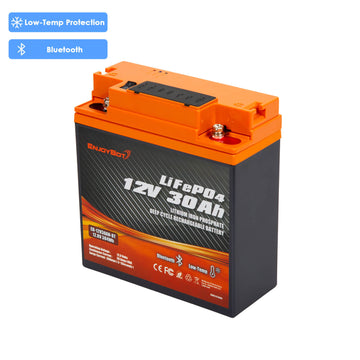




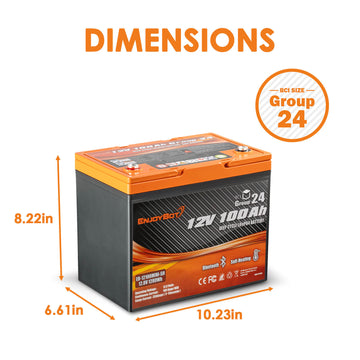



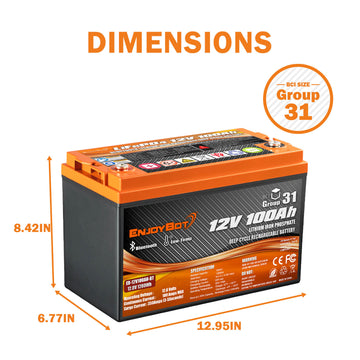






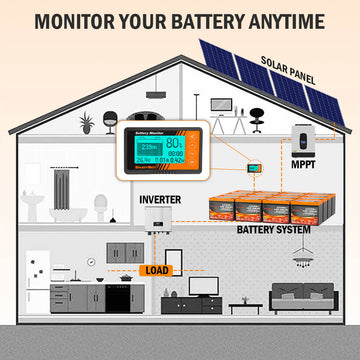
![[Upgraded Version] Enjoybot 14.6V 20A Waterproof Mountable LiFePO4 Lithium Battery Charger For 12V LiFePO4 Battery](http://enjoybotbattery.myshopify.com/cdn/shop/files/14.6V_20A_Waterproof_Battery_Charger_1_360x.jpg?v=1752565609)
![[Upgraded Version] Enjoybot 14.6V 20A Waterproof Mountable LiFePO4 Lithium Battery Charger For 12V LiFePO4 Battery](http://enjoybotbattery.myshopify.com/cdn/shop/files/14.6V_20A_Waterproof_Battery_Charger_2_360x.jpg?v=1752637374)
